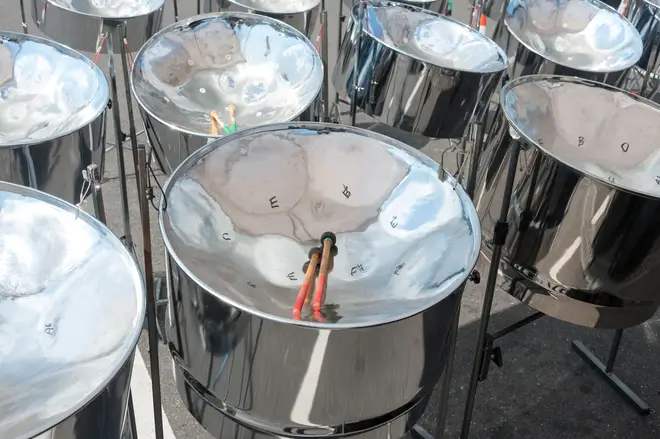On Air Now
Classic FM Breakfast with Tim Lihoreau 7am - 9am
26 July 2022, 15:27

Google Doodle show cool Steelpan tribute
A new animation, served to millions today on Google’s homepage, tells the fascinating history of a great percussion instrument – the steelpan.
Today, Google has published a new Doodle (watch above) in celebration of the steelpan, a popular percussion tool and the national instrument of Trinidad and Tobago.
Trinidad & Tobago-based artist Nicholas Huggins, who illustrated the Doodle, said he hopes “people can take away the sense of the industriousness and creativity of the people of Trinidad & Tobago.
“We are a small country on the global stage but the fact that we have given the world such a beautiful instrument is something to be held in the highest regard.”
A steelpan is a big, silver metal drum, often supported on a stand and played with two straight sticks.
The instrument was created by Trinbagonians – people of Trinidad & Tobago – in the 1930s and is recognised today as one of the only major acoustic musical instruments to be invented in the 20th century.
On this day, 26 July, in 1951, the Trinidad All-Steel Pan Percussion Orchestra (TASPO) performed at the Festival of Britain, and in doing so introduced the steelpan and a new music genre to the world.
Read more: Who was Oskar Sala, electronic composer celebrated in Google Doodle?

While the steelpan in its modern form was created in the 1930s, the instrument’s origins lie in the 18th century.
In the 1700s, when enslaved Africans were brought over to Trinidad by colonialists, they brought their long-standing musical drumming traditions with them. And when slavery was abolished in the 1830s, they brought the sound of their drums to the harvest festivals that would take place in Trinidad.
Then came a succession of bans on the percussion instrument. In 1877, government officials feared that steelpan-playing would drum up rebellion in the local communities. In protest, musicians started to make music by pounding tuned bamboo tubes on the ground.
In 1930, claims of disturbance led to a second ban. This time, musicians started using metal objects such as car parts, paint pots, dustbins, biscuit tins to make music instead – and so, the idea of the ‘pan’ was born.
The pan was banned once again during World War II, for security reasons. Musicians used the time to find ways to improve the sound quality, forming a range of dents in the surface that would sound different notes.
Google adds on its website: “In 1948, after the war ended, the musicians switched to using the 55 gallon oil drums discarded by the oil refineries. In addition to changing the shape of the drum surface, they found that changing the length of the drum allowed complete scales from bass to soprano. This formed the basis for the modern version of the pan.”

Pioneers and innovators such as Winston ‘Spree’ Simon, Ellie Mannette, Anthony Williams and Bertie Marshall, helped grow the steelpan into a legitimate and respected instrument, with the soothing sound it’s known for in the 21st century.
Usually played using a pair of straight sticks tipped with rubber at the end, steelpans can often be heard in groups known as steelbands or steel orchestras, and are enjoyed in concert halls around the world, from the Royal Albert Hall in the UK to Carnegie Hall in the United States.
Today, it’s a symbol of pride and resilience for the citizens of Trinidad and Tobago. Miami-based musician Etienne Charles, who composed music for the Doodle video, said: “I’d like people to feel the magic in the steelpan. An instrument born out of Afro-descendant resistance in Trinidad. A symbol of community, artistic excellence, and scientific innovation.
“Hopefully this makes people more inclined to come hear pan in its birthplace and feel the energy that comes from it. It’s really like nothing else.”